| Recent Featured Videos and Articles | Eastern “Orthodoxy” Refuted | How To Avoid Sin | The Antichrist Identified! | What Fake Christians Get Wrong About Ephesians | Why So Many Can't Believe | “Magicians” Prove A Spiritual World Exists | Amazing Evidence For God | News Links |
| Vatican II “Catholic” Church Exposed | Steps To Convert | Outside The Church There Is No Salvation | E-Exchanges | The Holy Rosary | Padre Pio | Traditional Catholic Issues And Groups | Help Save Souls: Donate |  |
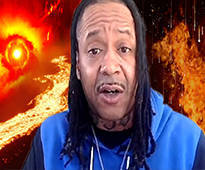
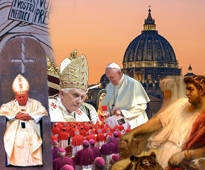
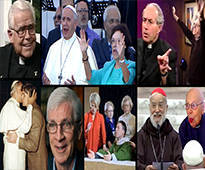
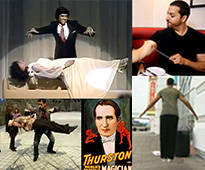
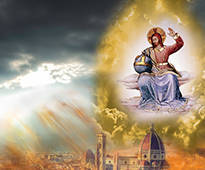

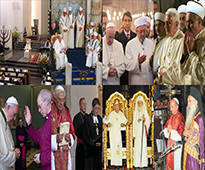


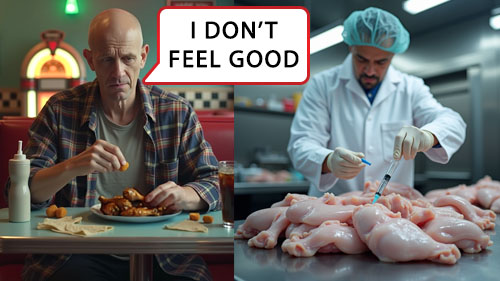 " />
" /> " />
" /> " />
" /> " />
" />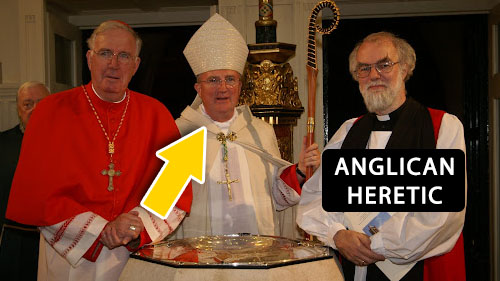 " />
" />




Heresy before Vatican II
To fully appreciate the Father Feeney controversy one must understand that the denial of the Faith that Father Feeney was combating was well in place in the years before Vatican II. Most people considering themselves to be “traditional Catholics” have the false impression that, “if we could only go back to what people believed in the 1950’s, everything would be fine.” No, it wouldn’t. Most of the priests and bishops in the 1940’s and 1950’s had already lost the Faith and had completely rejected the solemnly defined dogma that there is no salvation outside the Catholic Church. It is simply a fact that heresy against the dogma Outside the Church There is No Salvation was being taught in most seminaries in the 1940’s and 50’s. In fact, the breakdown of the Faith began much earlier than the 1940’s or 50’s.
As I said earlier in this document, St. Anthony Mary Claret, the only canonized saint at the First Vatican Council, had a stroke because of the false doctrines that were being proposed even then, which never made their way into the council. The step-by-step dismantling of the Catholic Faith by Lucifer began, not in 1964, but in 1864, long before Vatican II. Let’s take a look at some examples of blatant heresy in pre-Vatican II books with Imprimaturs (i.e., the approval of a bishop).
What we have here, in The Catholic Encyclopedia, in the year 1908, in a book with the Imprimatur of John Farley, the Archbishop of New York, is blatant heresy. The author, G.H. Joyce, completely rejects the dogma as it has been defined. He even employs the “Soul of the Church Heresy” which is completely heretical (as I showed in “The Soul of the Church Heresy” section). The defined dogma which declared that only those in the Catholic Church can be saved, has given way to the heresy that God saves men “apart from the Church.”
But to these heretics, no longer does this dogma mean that outside the Church there is no salvation, but rather that non-Catholics are saved in their false religions but by the Catholic Church. The necessity of Catholic faith and unity for salvation has been utterly repudiated.
And this proves that the dogma that those who die as non-Catholics cannot be saved was being denied publicly even as early as 1908.
Here we find more clear heresy in a catechism written by the Bishop of Krishnager, Louis LaRavoire. This Catechism is still promoted today by many so-called “traditional Catholics.” By permitting prayer for departed non-Catholics, Louis LaRavoire denies the dogma that all who depart life as non-Catholics are lost.
Here we find blatant heresy in the Baltimore Catechism, imprimatured and published in 1921. The authors of this heretical catechism are bold enough to assert that salvation for a non-Catholic is not only possible, but dependent upon whether the non-Catholic “firmly believes the religion he professes and practices to be the true religion.” So if you’re firmly convinced that Mormonism is the true religion, then you’ve got a good shot at salvation, according to the Baltimore Catechism; but if you’re not firmly convinced of this then your chances are less. This makes an absolute mockery of the dogma: one Lord, one faith and one baptism (Eph. 4:5).
The words of Gregory XVI in Mirari Vos could have been written specifically to the authors of the Baltimore Catechism; and indeed they were addressed to other heretics in his day who proposed the same thing. Notice how far the Baltimore Catechism has come from the dogmatic Athanasian Creed, which Gregory XVI affirmed, which states that whoever wishes to be saved must hold the Catholic Faith. The authors of the Baltimore Catechism could not have, in their wildest imagination, pretended to believe in that dogmatic profession of faith.
The reader should also note that Pope Gregory XVI teaches that those who have never been Catholic are lost, as well as Catholics who leave the Church.
The Baltimore Catechism rejects the words of Jesus Christ, who declared that “he that believeth not shall be condemned” (Mk. 16:16). The revised edition of the Scriptures by the authors of the Baltimore Catechism would have to read: “he that believeth firmly in false religions shall not be condemned.”
It’s a pity that the Catholic Church was stupid enough to define more than seven times that outside the Catholic Church no one at all is saved, because (as the “great” Ludwig Ott reveals) “those who are in point of fact outside the Catholic Church can achieve salvation.” It’s a shame that the Church didn’t possess this profound enlightenment, that it didn’t know that what it had been teaching “infallibly” for all of these years was actually just the opposite of the truth.
In truth, what Ludwig Ott says above is equivalent to declaring that the Blessed Virgin Mary was conceived in Original Sin. There is no difference whatsoever. If the Church defines that outside the Church no one at all is saved (Pope Innocent III, etc.), and I assert that “those who are in point of fact outside the Catholic Church can achieve salvation,” then I am doing the exact same thing as if I were to declare that the Virgin Mary was conceived in some sin, when the Church said she had no sin. I would be stating exactly the opposite of what the Church had infallibly defined, and this is precisely what Ludwig Ott does.
But shortly after explicitly denying the dogma that no one can be saved outside the Church, notice what Ludwig Ott says:
“But let your speech be yea, yea: no, no: and that which is over and above these, is of evil” (Mt. 5:37). From one page to the next, Ludwig Ott contradicts himself on whether those who are outside the Catholic Church can achieve salvation! He even uses the exact same verb – “achieve” – in both sentences, but with the opposite meaning from one to the next: 1) those “outside the Church can achieve salvation”; 2) “salvation cannot be achieved outside the Church.” His speech is not of God, but of the Devil. Black is white and white is black; good is evil and evil is good; truth is error and error is truth; salvation can be achieved outside the Church and salvation cannot be achieved outside the Church.
For the pre-Vatican II heretics who condemned Father Feeney and despised the dogma Outside the Catholic Church There is No Salvation, it is no problem believing that there is salvation outside the Catholic Church, while simultaneously believing that there is no salvation outside the Catholic Church. It is no problem for these people because they are of evil (Mt. 5:37).
Those who obstinately accept the heresy that is contained in these pre-Vatican II books – such as Ludwig Ott’s Fundamentals of Catholic Dogma – should rightly fear, as Pope Gregory XVI says, because they will without a doubt inherit a place in Hell if they do not repent and convert.
According to this, it’s not only possible to be saved outside the Church (which is a direct denial of the dogma), but it’s actually possible to be, “for all intents and purposes,” a member of the Catholic Church while still outside of Her! This is so heretical and contradictory that it’s not worthy of further comment, except to say that what The Catechism Explained proposes here – that a man can be saved outside the Church as long as he leads “a God-fearing life” – is exactly what Pope Gregory XVI condemned in Mirari Vos: that a man may be saved in any religion whatsoever, so long as morality is maintained.
I could continue with examples of pre-Vatican II imprimatured texts which contain heresy, but the point should be obvious: the denial of the dogma Outside the Catholic Church There is No Salvation was well in place in the minds of most priests and bishops before Vatican II, so the opposition Father Feeney experienced in defending this truth in the late 1940’s and 1950’s comes as no surprise. The Great Apostasy was well in place in the 1940’s and 50’s, having actually begun in the mid to late 1800’s, and Father Feeney was attempting to stifle this tide of apostasy by cutting away at its root cause: the denial of the necessity of the Catholic Church for salvation.
Endnotes:
[1] The Catholic Encyclopedia, Vol. 3, 1908, “Church,” pp. 752-753.
[2] The Papal Encyclicals, Vol. 2 (1878-1903), p. 474.
[3] The Papal Encyclicals, Vol. 1 (1740-1878), pp. 229-230.
[4] My Catholic Faith, a Catechism by Bishop Louis LaRavoire, Kenosha, WI: My Mission House, 1949, p. 272.
[5] Denzinger 570b.
[6] The Papal Encyclicals, Vol. 1 (1740-1878), pp. 237-238.
[7] Dr. Ludwig Ott, Fundamentals of Catholic Dogma, p. 310.
[8] Dr. Ludwig Ott, Fundamentals of Catholic Dogma, pp. 310-311.
[9] Decrees of the Ecumenical Councils, Vol. 1, p. 386.
[10] Rev. Spirago and Rev. Clark, The Catechism Explained, p. 246.
[11] The Papal Encyclicals, Vol. 1 (1740-1878), pp. 237-238.
Sign up for our free e-mail list to see future vaticancatholic.com videos and articles.
Recent Content
^